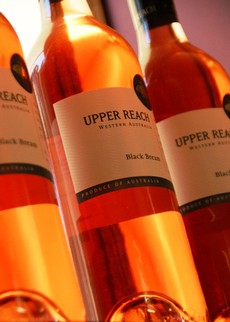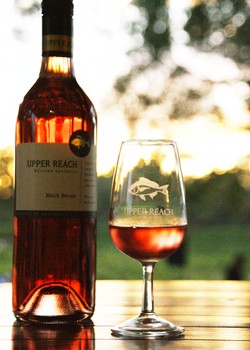How is Rose wine made? Is is it a red or a white wine? A guide to Pink Wine.
Rosé wine is a happy place for a lot of people, its in-between red and white wine and shouts Summer like nothing else or is delicious any time of the year!
Rosé wine is made when the grape juice has contact with the skin of red grapes for a short time.
Whereas our reds ferment on their skins for up to two weeks, the rose can sit on skins for 2 hours to 2 days; depending on the winemaker!
In fact it is the winemaker that has full control of the colour of Rosé wine, and they remove or effectively strain off the red grape skins (which is where the red colour comes from) when the wine has reached their preferred colour.
So Rosé wine can actually be made from any red grapes, though the winemaker will have preferred varieties and styles that they like to use.
Tasting Rosé:
There are five main flavours that tend to be found in most rosé wines:
- strawberry 🍓
- honeydew melon 🍈
- rose petals 🌹
- citrus peel 🍋
- rubarb
The primary flavors of rosé wine tend to be red fruits, flowers, citrus, and melon, prehaps with a crunchy green flavor on the finish, think celery or rhubarb.
Of course the choice of which grapes are used to make rosé wine will have a huge influence on its flavor.
How is rosé wine made at Upper Reach?
 No, we don't just add a bit of red wine to white wine 😂🤣 🙄!
No, we don't just add a bit of red wine to white wine 😂🤣 🙄!
Its much more complicated than that!
(Even though our winemaker's mother thought that was how she did it for 15 years, until horrified Lauren explained...)
The winemaker chooses what grapes she wants to use to make rosé, typically Tempranillo.
She gets them picked earlier, so less ripe than if they were going to be made into a red wine, as she's looking for more delicate flavours.
As these grapes are picked earlier, there is a little less sugar, keeping the alcohol lower and giving a little more acid, leading to a vibrant fruity wine.
So how do we make rosé wine?
The Maceration Method:
All our fruit is handpicked, it is refridgerated overnight and the next day we crush and destem the grapes.
Then the must (a mix of skins, juice, and grape flesh) is pumped into a vat/ the wine press, so that the juice has contact with the grape skins for a period of time. This is called maceration, when the red wine grapes are left to rest, or macerate in the grape juice for a period of time.
The longer the juice is in contact with the red grape skins the darker the colour of the wine will be. This is the winemaker's call, they decide on how long the skin contact is, as it deepens in colour this will of course affect flavour too.
The juice is then removed, effectively the skins are 'strained off' and the wine continues to ferment without the skins.
The wine is stablised for a period of time and then ready to bottle.
There is a Second Way to make Rosé....
The Saignee or 'Bleed' Method:
When we make our big red wines, often the winemakers want to concentrate the flavours of, for example the Shiraz. Once they've crushed and destemmed the red grapes, they will 'bleed off' some of the juice and that gets added to the rose.
This produces a great rose but also concentrates the red wine- so a win win!
The Saignee or bleed method only happens in places where they are trying to make top-notch red wine, as it's much more expensive.
At Upper Reach we use a combination of both the maceration and Saignee methods, we are able to produce a vibrant wine, bursting with character and depth. It truly is an expression of Summer.
One of our favourite things about Rose is how versatile it is.
It can be paired with antipasto, pizza, salmon, dessert or even on its own.

